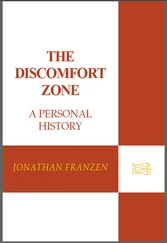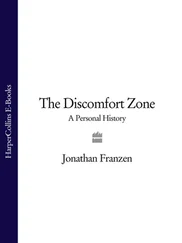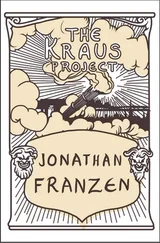She returned from her bedroom with several manila folders. “I’ve been staying in the library,” she said, righting the chair. “Two people came to my office last Friday to be nasty in person. I haven’t gone back since.”
“That’s what Howard said.”
She nodded, yawning. “I was thinking about what that boyfriend of your sister’s was saying. I remembered something, or I thought I did. I remembered it was on a right-hand page facing something else I’d looked at. And. I was right.” From the top folder she took a stapled sheaf of photocopies. “This is an article from the Bulletin of the Geological Society of America, July ’69. You can just read the abstract and what I’ve underlined.”
“What for?” Louis said.
“Because it’s interesting.”
A Theory of Subcrustal Petroleogenesis
A. F. Krasner
Research Chemist, Sweeting-Aldren Industries
Abstract: Significant releases of methane and petroleum in non-fossiliferous regimes (Siljan, Wellingby Hills, Taylorsville) have called into question the assumption that subterranean hydrocarbon deposits derive principally from breakdown of trapped organic matter. Improved estimates of the chemical composition of comets and the major planets suggest levels of carbon within the Earth 10 2— 10 5times larger than earlier estimates. A laboratory study demonstrates the possibility of synthesizing petroleum from elementary hydrocarbons under pressures approaching those in the Earth’s interior. A model of hydrocarbon capture during planetogenesis predicts the formation and accumulation of methane and more complex hydrocarbons at the upper boundary of the asthenosphere and explains the releases observed at Wellingby Hills. A program of deep drilling to further test the model is proposed.
The only underlined words Louis could find in the article were in the last paragraph. Renée had done her underlining with a straightedge, a work habit that had always given him the creeps. Advances in deep-well technology have for the first time made feasible narrow-bore holes to depths in excess of 25,000 feet. Two sites in the Berkshire Mountains Synclinorium, including the Brixwold Pluton (in the vicinity of which there is some evidence of slow methane release), have been chosen for a drilling program, initiated by Sweeting-Aldren Industries, which pending final funding will commence in December 1969 and, it is hoped, attain the critical depth of 25,000 feet in Spring of 1971. Significant quantities of methane or petroleum found at this depth, under a heavily metamorphosed granitic pluton overlaying pre-Cambrian schists, would provide strong confirmation of the trapped-layer model .
“Lot of big words here,” Louis said.
“Actually a seminal article in its way.” Renée, with unseemly possessiveness, kept a hand extended until he gave her back the article. “The evidence back then was so flimsy the paper should never have been published, but this is an idea that’s still around. That there’s this huge ocean of crude oil and natural gas pooling right below the earth’s crust, and that all this fuel is from the primordial gunk that went into making the planet, and that the total reserves of so-called fossil fuels are just a drop in the bucket compared to all this stuff farther down. The Swedish government fairly recently spent ten million dollars drilling an inconclusive well in this Siljan basin. The idea’s not dead. Not many people take it seriously, though.”
“Uh huh.”
“So then there’s this thing from Nature . January ’70.”
She’d neatly boxed in red ink a one-paragraph note in the News section to the effect that the American chemical concern Sweeting-Aldren had begun to sink a deep well at an undisclosed site in eastern Massachusetts, with a view to testing the hypothesis of chemist A. F. Krasner regarding the non-fossil origin of much of the world’s oil and natural gas. The drilling was proceeding at a rate of 100 feet per day and, allowing for the usual delays and equipment failures, was expected to reach 25,000 feet—“the critical depth, in Krasner’s view”—late the next spring.
“Do you notice anything there?”
Louis waved a hand tiredly. “These brain-teaser kind of things—”
“The Berkshires aren’t in eastern Massachusetts.”
“Oh.” He nodded. “I didn’t know that. So I wouldn’t have gotten it anyway. So it’s good you told me.”
Renée closed one folder and opened another. The handwriting on the tabs of the folders was as regimented as a draftsman’s. “February 25, 1987,” she said. “Boston Globe: Tremors in Essex County Persist..” She handed Louis a photocopied clipping. “April 12, 1987. Boston Globe, again. ‘Scientists Puzzled by Peabody Earthquake Swarm. ’” She took out a third article. “ Earthquake Notes , 1988, number 2, The Peabody Microseisms of January-April 1987 and Their Tectonic Environment.’ Penultimate paragraph: ‘The spatial and temporal distribution of the microseisms bears a marked similarity to known instances of induced seismicity in the vicinity of injection wells .’ Emphasis added. ‘However, the relatively great depth of the Peabody tremors (i.e., on average 3 kilometers deeper than the deepest commercial waste-disposal wells) would appear to rule out such a mechanism. Furthermore there are no licensed injection wells operating within a 20-kilometer radius surrounding the site of activity. ’”
She looked her beer bottle in the face for a second, and then took a long pull. She was definitely able to control herself now.
“I remember when this swarm started up in Peabody. It happens in a couple other places in New England with some regularity. You get these tiny earthquakes, for the most part too small to feel. Anywhere from one to several hundred per day for days or weeks or months. Nobody really knows what causes them. The Peabody series was of interest because there’d never been anything like it there before.”
“Did I understand this right that injection wells cause earthquakes?”
“Yeah, it’s called induced seismicity. It happens after you’ve been pumping lots of liquid underground, and basically it’s as if the rock down there gets slippery from all the extra liquid. The classic example was in the early sixties, at the Rocky Mountain Arsenal, outside Denver. The Army was making chemical weapons and generating millions of gallons of toxic liquid waste and pumping it down a 12,000-foot well. Denver had always been pretty quiet seismically, but about a month after the pumping started they started recording all these earthquakes. On average about one a day, none of them bigger than 4.5 or so. Wheneyer they stopped pumping, the earthquakes stopped too, and when they started again, so did the earthquakes. It was pretty open and shut. The GS did a study—”
“The what?”
Renée blinked. “Geological Survey. They pumped water into dry oil wells in western Colorado. Whenever the water pressure in the bedrock got above 3,700 pounds per square inch the earthquakes started up. If you have some kind of pre-existing strain underground, the water in the cracks lubricates things and disturbs the balance of forces. The same thing also happens when you build a dam and form a reservoir. The weight of the new lake forces water into the underlying rock. There was a long series of events in Nevada, behind the Hoover Dam, after it filled up. Same thing in Egypt, behind the Aswan Dam. Same thing in Zambia, and China, and India. I think the one in India was very good-sized. Killed a couple hundred people.”
“I get the feeling you don’t spend your nights watching baseball on TV.”
She opened a third folder, disregarding him. “Krasner disappears from the literature after one article. He’s not in any chemistry journal, not in any geophysics journal, and he was never in American Men and Women of Science. One full-length paper, one paragraph in Nature , and that’s it. His theory got reinvented independently in the late seventies by a guy named Gold, at Cornell. Gold cites Krasner once, calls him ‘prescient,’ in the papers I could find. And that’s it.”
Читать дальше
Конец ознакомительного отрывка
Купить книгу












